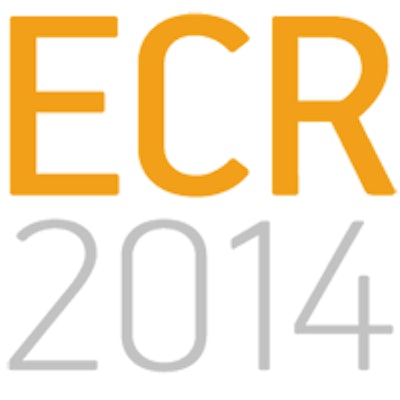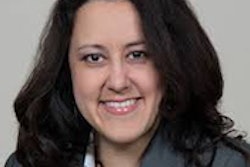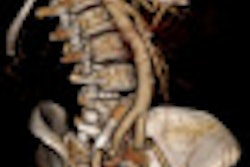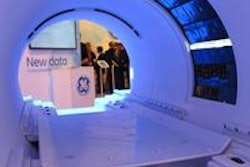
VIENNA - Because of the proportion of false positives in predicting chronic kidney disease (CKD) in patients undergoing contrast-enhanced CT, the current combination of all risk factors is inaccurate, delegates at ECR 2014 learned. A less elaborate model cuts estimated glomerular filtration rate (eGFR) redundancies by 50%.
Kidney disease is the most important risk factor for contrast-induced nephropathy, so most prevention guidelines recommend screening for kidney disease before contrast media administration, which is usually done through eGFR measurement.
"Current guidelines usually describe screening models to do this, which entails that if risk factors for kidney disease are present, eGFR measurement is indicated," said Dr. Shira Moos from the Academic Medical Center in Amsterdam during a Sunday morning session. "But we think these screening models could lead to redundant eGFR measurements."
Moos and colleagues assessed which risk factors make up the best screening model for kidney disease and sought to determine if redundant eGFR measurements in patients seen for intravenous contrast media could be reduced.
Their prospective cohort study included 998 consecutive patients undergoing contrast-enhanced CT. The eGFR of all patients was included and the researchers evaluated all frequently mentioned risk factors: diabetes mellitus, history of urologic/nephrologic disease, cardiovascular disease, congestive heart failure, hypertension, age older than 60, age older than 75, anemia, nephrotoxic medication, active malignancy, and multiple myeloma/Waldenström's macroglobulinemia.
The researchers constructed four models to screen for kidney disease:
- Model 1: All risk factors
- Model 2: Diabetes mellitus, history of urologic/nephrologic disease, hypertension, and age older than 60 years
- Model 3: Diabetes mellitus, history of urologic/nephrologic disease, cardiovascular disease, and hypertension
- Model 4: Diabetes mellitus, history of urologic/nephrologic disease, congestive heart failure, and age older than 75
| Kidney disease screening models | |||
| Model | Total eGFR measurements | eGFR < 60 mL/min | eGFR < 45 mL/min |
| 1 | 816 | 108 patients | 30 patients |
| 2 | 745 | 108 patients | 30 patients |
| 3 | 622 | 100 patients | 30 patients |
| 4 | 440 | 89 patients | 30 patients |
Of the 26 false-negative patients with an eGFR of 45 to 60 mL/min, six had one risk factor (age older than 75 years/anemia). All associations between eGFR and combinations were significant, Moos said.
"We could say model 4 was the most effective model and, this led to the lowest proportion of redundant eGFR measurements," she said.
If model 4 is compared with model 1, which is the most similar to the screening advised in prevention guidelines, redundant eGFR measurements could be reduced by 50%. Model 4 also found most patients with an eGFR less than 60 and, more important, all patients with an eGFR less than 45, she said.
"I guess it's safe to say we could use fewer risk factors when screening for kidney disease, which would lead to less redundant eGFR measurements," she concluded.




















